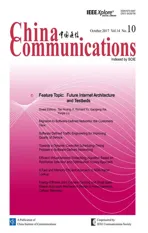Energy-Efficient Resource Allocation for Small-Cell Networks: A Stable Queue Perspective
2017-04-08HongxinWeiWeiFengYunzhouLiShidongZhou
Hongxin Wei, Wei Feng*, Yunzhou Li, Shidong Zhou*
State Key Laboratory on Microwave and Digital Communications
Tsinghua National Laboratory Information Science and Technology
Department of Electronic Engineering, Tsinghua University, Beijing 100084, China
* The corresponding author, email: fengwei@tsinghua.edu.cn, zhousd@tsinghua.edu.cn
I. INTRODUCTION
Small-cell network (SCN) is believed to be a promising solution to meet the explosive growth of traffic demand [1] for future communication networks [2]. In SCNs, a huge number of base stations (BSs) are densely deployed. The propagation range and the path loss decline. Thus, the energy, which is needed to transmit given traffic data, could be reduced. If enough small BSs are deployed in SCNs to satisfy the traffic demand, the overall energy consumption may stay the same. However, too many BSs may cause a high cost of deployment and operation. So operators would rather choose to deploy less BSs, which are not small enough. Although the energy consumed by a single BS drops in SCNs, the number of BSs increases a lot. As a result, the total energy consumption still rises. Therefore,the problem of energy consumption in SCNs still needs to be studied.
Queue state information (QSI) could be used to manage radio resource. For example, when the queue is short, scheduler could choose to transmit at a low power to save energy. Our previous work showed that QSI could be used to enhance energy efficiency by radio resource management [3]. However, it only studied the scenario with the single carrier. Most of the existing researches of queueaware scheduling focus on single cell scenario, including the optimization of sum rate [4],delay [5] and energy [6]. However, they do not consider BS selection and inter-cell interference. Most of the existing researches of user scheduling and resource allocation in multiple cells focus on enhancing system throughput[7-11,30-31], and researches which optimize energy efficiency in multiple cells do not consider QSI [12-15]. Authors in [16] study energy saving in heterogeneous network by energy harvesting, BS activation, user scheduling and power allocation, while the requirements of QoS is met. But they only utilize channel state information (CSI). In [17], QSI is used for user scheduling and power allocation in single-carrier system, and an algorithm that combines mean field game and Lyapunov optimization theory, is proposed.
In multi-carrier scenario, queue-aware multi-BS multi-MS scheduling becomes more complicated, as there are more variables, and the constraints for user assignment are also different. These changes make the problem more difficult. In [18], strategy of user scheduling and carrier allocation is investigated, and the problem is proved to be NP-hard, but they do not consider power allocation and energy saving. In [19], game theory is used to solve the problem of power and carrier allocation,but the authors assume users are assigned at first. In [20], the authors use QSI for beamforming and remote radio head (RRH) activation in cloud radio access networks (C-RANs)[21] to optimize energy efficiency. However,there is no constraint for user assignment, and each user should process data from all the RRHs, which puts forward a high requirement for MSs.
This research concentrates on reducing the total energy consumption in all time slots in multi-carrier SCNs with full frequency reuse,which is different from traditional researches that aim at minimizing instantaneous power or energy consumed per bit. In the optimization problem, both QSI and CSI are exploited for user scheduling, carrier allocation and power allocation. Through adopting Lyapunov drift-plus-penalty techniques [22], the problem is modeled as a mixed combinatorial optimization problem of dynamic scheduling in each time slot. As the formulated optimization problem is NP-hard, a heuristic iteration algorithm(MC-HA) is presented to solve it. Numerical results verify that MC-HA has approximate performance as brute-force algorithm. The accomplishments of the work mainly include:
In this work, QSI is jointly considered with CSI to reduce the overall energy consumption in multi-carrier SCNs with full frequency reuse. A heuristic iteration algorithm (MC-HA) is proposed.
● QSI and CSI are jointly considered to manage radio resource to save the overall energy consumption in coordinated multicell SCNs, where inter-cell interference exists among adjacent cells. To the best of authors’ knowledge, the queue-aware energy-efficient strategy of user scheduling,carrier allocation and power allocation in multi-carrier SCNs with inter-cell interference could not be found in existing literatures.
● As the optimization problem of queueaware user scheduling, carrier allocation and power allocation is NP-hard, a heuristic iteration algorithm (MC-HA) is proposed.Simulation results verify that the performance of MC-HA is similar to that of exhaustive search algorithm (MC-ESA).Moreover, it could achieve an approximate sum rate as algorithm which concentrates on maximizing system sum rate, and could bring down energy consumption to different degrees according to the traffic load.
The remainder of the paper is arranged as the following. Section II describes the system model, and formulates the optimization problem by using Lyapunov optimization theory.In Section III, a dynamic scheduling strategy for multi-carrier system is presented. In Section IV, numerical results of the proposed algorithm are presented and discussed. Section V gives the conclusions of the study.
II. SYSTEM MODEL AND PROBLEM FORMULATION
We consider the downlink transmission of a multi-carrier system with C carriers. There are N BSs and K MSs. The system works with full frequency reuse, every BSs could transmit to any MSs in each carrier, as shown in figure 1. In each time slot, BSs and MSs can work in multiple carriers. The incoming data of every MS is cached separately by the central processor. At the beginning of each time slot, it is assumed that the central processor already has the CSI prediction of this time slot from previous channel measurement and feedback from the MSs. Then the central processor takes advantage of both QSI and CSI to determine the strategy of joint user scheduling,carrier allocation and power allocation.
Denote sijc(t )∈{0,1} as the indicator of user scheduling and carrier allocation, and sijc(t)=1 means that BSiserves MSjin carrier c in time slot t.
Denote pic(t ) as the transmitting power of BSiin carrier c in time slot t. In the ensuing discussions, the notation t will be left out if it does not cause ambiguity.
For telecommunication operators, the expenditure of power and the greenhouse gas emissions are determined by the overall energy consumption in a long time. Some myopic algorithms minimize the instantaneous power to meet given data rate. However, minimizing the instantaneous power is not equal to minimizing the overall power allocation. For example, when the channel state is bad, these algorithms may consume a lot of energy to meet the data rate. This may cause a waste of energy.
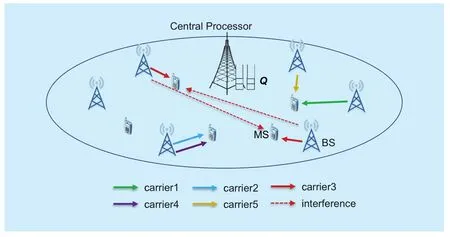
Fig. 1 Scenario of multi-BS multi-MS queue-aware resource allocation in multi-carrier SCNs with inter-cell interference
Therefore, we focus on finding the optimal scheme of user and carrier assignment sijc,and power allocation picto minimize the total power expenditure in all time slots.
Denote Qjas the queue length of MSjat the beginning of time slot t1The unit of Qj(t ) is bits/Hz, which is normalized by bandwidth..
In order to guarantee the data transmission,it is supposed to keep Qj(t ) mean rate stable2If Q(t) satisfiesit can be said that Q(t) is mean rate stable and the arrival rate of traffic data is in mean rate stable region[22].for any MSj. According to [22], keeping Qj(t)mean rate stable means that all the incoming data could be transmitted. Based on the above discussions, the stochastic optimization problem is modeled as:
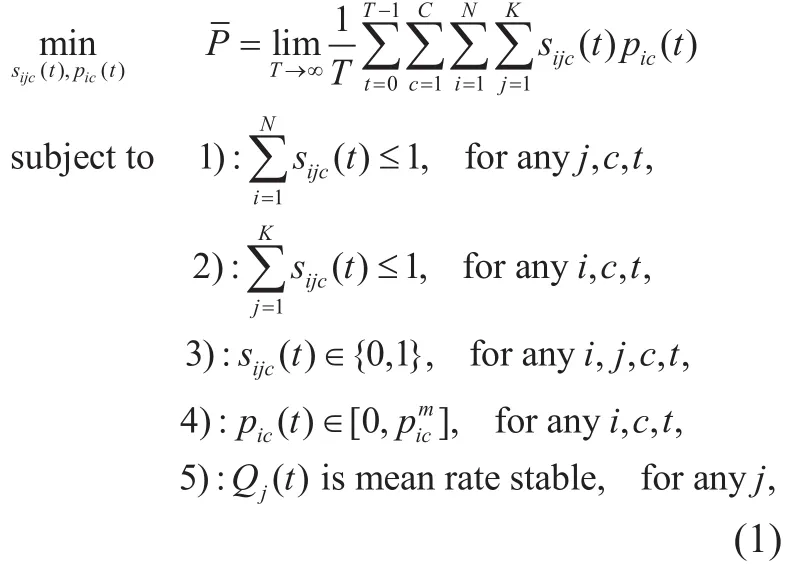
where T is the number of time slots,is the maximum transmitting power of BSi in carrier c.
In Problem (1), constraint 1) ensures in each time slot one user is assigned to not more than one BS in each carrier; constraint 2) ensures in each time slot each BS serves not more than one user in each carrier; constraint 4) ensures the transmitting power of BSi in carrier c is not more thanand ensures the transmitting power is positive; constraint 5) ensures all the incoming data can be transmitted.
According to Lyapunov optimization theory, the constraint 5) in problem (1)could be satisfied by greedily maximizing queue-weighted sum rate minus the penalty of energy consumption. Furthermore, by dynamically optimizing the problem in (2) in each time slot, the total energy consumption could be kept close enough to the minimum energy consumption, which is needed to keep Qj(t)mean rate stable [22].
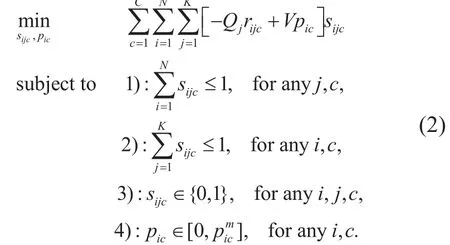
According to Shannon capacity theory, in the scenario with resource reuse among cells,the achievable data rate rijccan be calculated as in equation (3).

where B is the bandwidth of subcarrier, hijcis the complex channel gain from BSito MSjin carrier c3In this work, hijc is normalized by noise power.If MSj cannot receive signal from BSi in carrier c,hijc is assumed to be zero..
III. DYNAMIC SCHEDULING STRATEGY
Owing to the existence of inter-cell interference, the problem in (2) is NP-hard [23]. In order to solve it, we devise a two-step heuristic iteration algorithm:
● STEP I. In each carrier, solve Problem (4)and get optimal user scheduling and carrier allocation sˆijcwith given pˆic.
● STEP II. Solve Problem (5) and get opti
mal power allocation picwith given sˆijc.
In the first step, we assume the power allocation picis known, and leave out inter-cell interference. Then the problem can be handled in each carrier separately, by solving the problem in (4) in each carrier.
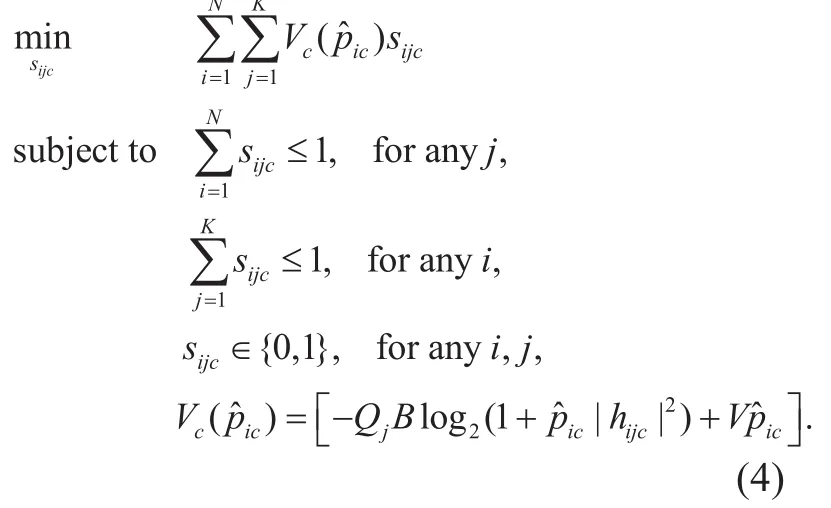
Problem (4) can be solved by Hungarian algorithm [24], and denote the solution of Problem (4) as sˆijc. In each carrier c, take sˆijcinto Problem (2), then we get the following optimization problem:

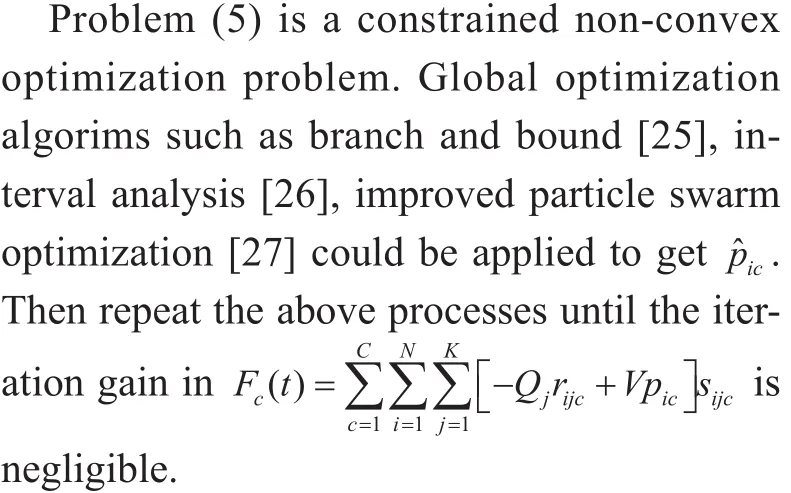
According to the above discussions, the proposed algorithm of user scheduling, carrier allocation and power allocation (MC-HA) is illustrated in Algorithm 1, where kmaxis the maximum iteration number, and es is the iteration precision factor. In general, kmaxcould be set as NKC++.
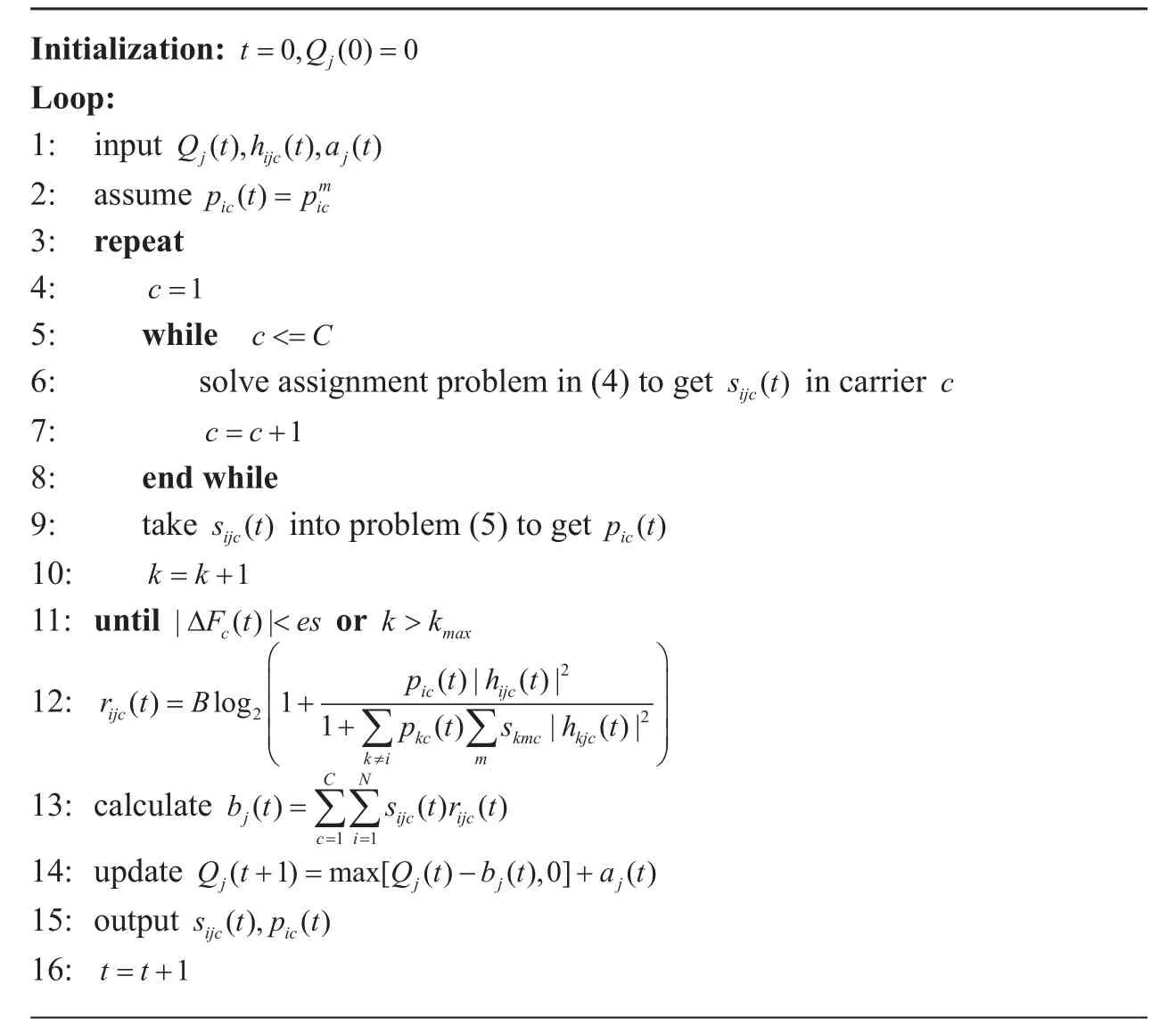
Algorithm 1 MC-HA
IV. SIMULATION RESULTS AND DISCUSSIONS
In this section, we evaluate the performance of MC-HA by simulations.
The performance of MC-HA is compared with the following algorithms:
● Multi-carrier MaxWeight Algorithm (MCMWA): in each time slot, MSs transmit with maximum power and find the optimal scheduling strategy, which maximizes the queue-weighted sum rate in each carrier by solving the optimization problem in (4)with, and inter-cell interference is ignored4MC-MWA is developed from the MW-GAPA[24], which jointly uses MaxWeight algorithm[28] and algorithms for assignment problem..
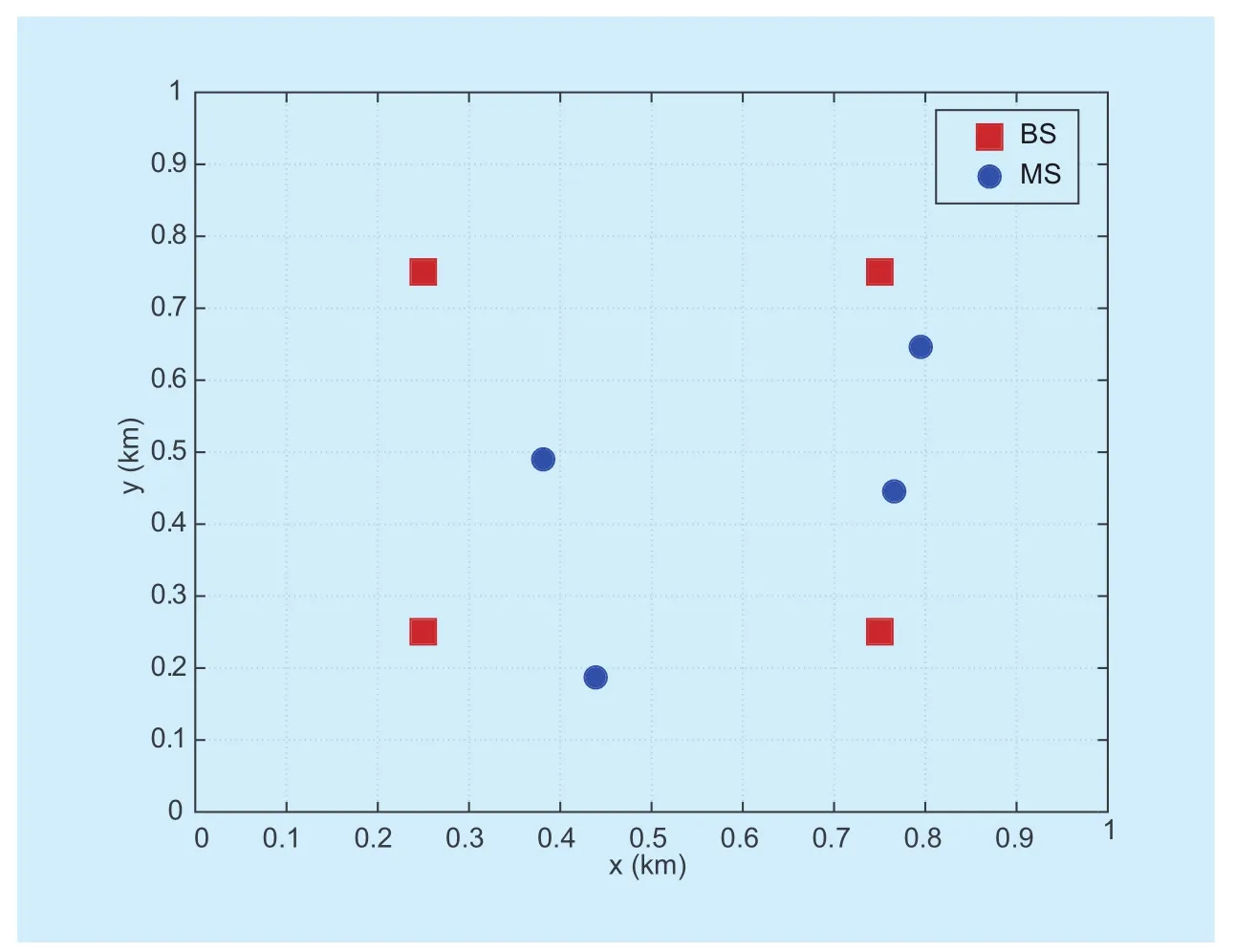
Fig. 2 Simulation scenario with 4 BSs and 4 MSs
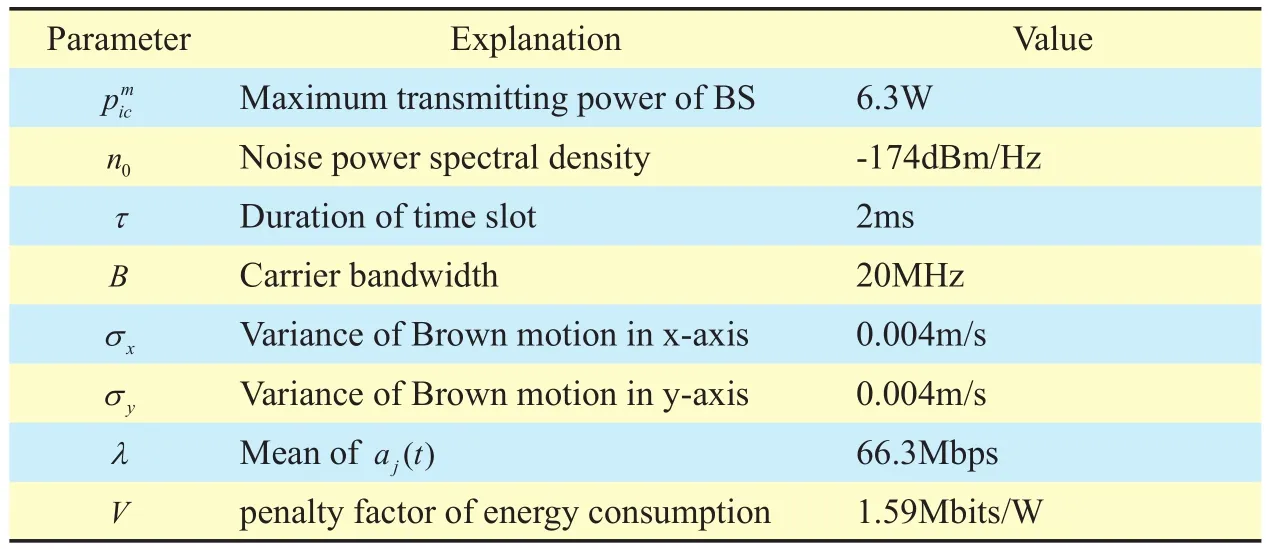
Table I Simulation parameters
● Multi-carrier Energy-Efficient Max-Weight Algorithm (MC-EEMWA): this algorithm is developed from EEMWA[24]. In each time slot, MSs transmit with maximum power and find the optimal scheduling strategy, which maximizes the queue-weighted sum rate minus penalty of energy consumption in each carrier by solving the optimization problem in (4) withand inter-cell interference is ignored.
● Multi-carrier Exhaustive Search Algorithm(MC-ESA): this algorithm searches from all the feasible solutions for the problem in (2)to find the best strategy of user and carrier assignment sijc, power allocation pic.
4.1 Simulation setup
We simulate a SCN with 4 BSs, 4 MSs and 2 carriers5As the simulations contain exhaustive search algorithm, which needs to search the optimal solution from all the combination between BSs, MSs and carriers, a moderate scale network is chosen for simulations.}in an area of 1000×1000m, as shown in figure 2. We run 500 independent trials, and each trial contains 500 time slots.In each trial, MSs are randomly placed in the region, and move randomly as Brown motion[29]. Assume the process of data arrival is independent and identically distributed (i.i.d),and ajfollows a λ poisson distribution. In the simulations, the path loss is modeled as PL(d)=35+35log10(d ) (dB) and Rayleigh fading is considered [24]. Table 1 shows the main simulation parameters.
4.2 Simulation results
Figure 3 shows the sum rate of the proposed algorithm as the data arrival rate λ increases.When λ is low, the proposed algorithm MCHA can achieve the same sum rate as MCMWA, which aims at maximizing the sum rate. When λ is high, the proposed algorithm MC-HA is better than MC-MWA, which does not consider frequency reuse.
Figure 4 shows the performance of energy consumption. It can be seen that the energy expenditure of MC-HA is close to that of MCESA, which verifies the performance of the proposed heuristic algorithm. When λ is low,the energy expenditure of MC-HA is lower than MC-EEMWA, as MC-HA takes advantage of frequency reuse. As power control is considered in MC-HA and MC-EEMWA, they consume less energy than MC-MWA does.When λ increases, the energy consumption of MC-HA and MC-ESA grows up gradually,and exceeds MC-MWA finally, when λ is high. In this case, there are more than one BSs working in each carrier under MC-HA and MC-ESA strategy, while only one BS could transmit under MC-MWA and MC-EEMWA strategy.
Figure 5 compares the energy efficiency6In simulations, energy efficiency is defined as the rate of the time average of sum rate and the time average of the sum power.of the proposed algorithms. When λ is low, MCHA and MC-ESA are more energy-efficient than MC-EEMWA and MC-MWA, which indicates that frequency reuse in multi-carrier system can help enhancing the energy efficiency when λ is low. When λ becomes high,MC-HA and MC-ESA prefer to guaranteeing the traffic demand rather than saving energy.Thus their energy efficiency decrease as λ increases, and finally approach the curve of MC-EEMWA. As shown in figure 4~figure 5,the performance of MC-HA is close to that of MC-ESA.
Figure 6 shows the calculating time needed for MC-HA algorithm under different carrier numbers6In simulations, energy efficiency is defined as the rate of the time average of sum rate and the time average of the sum power.. For given BS number and MS number, it can be seen that the calculating time slowly grows along with the increase of carrier number. When N and K are not too large, the growth of the calculating time is almost linear as carrier number increases.
V. CONCLUSION
In this work, QSI is jointly considered with CSI to reduce the overall energy consumption in multi-carrier SCNs with full frequency reuse. This optimization problem is modeled as a mixed combinatorial optimization problem,which decides the strategy of user assignment,carrier allocation and power allocation in each time slot. A heuristic iteration algorithm(MC-HA) is proposed. Simulations verify that MC-HA has approximate performance as exhaustive search algorithm. It could achieve an approximate sum rate as the algorithm, which concentrates on maximizing system throughput, and could lessen the energy consumption under low load of traffic. Meanwhile, the queue-aware algorithm saves energy at the price of average delay, as it may lead to the increase of queue length.
ACKNOWLEDGEMENT
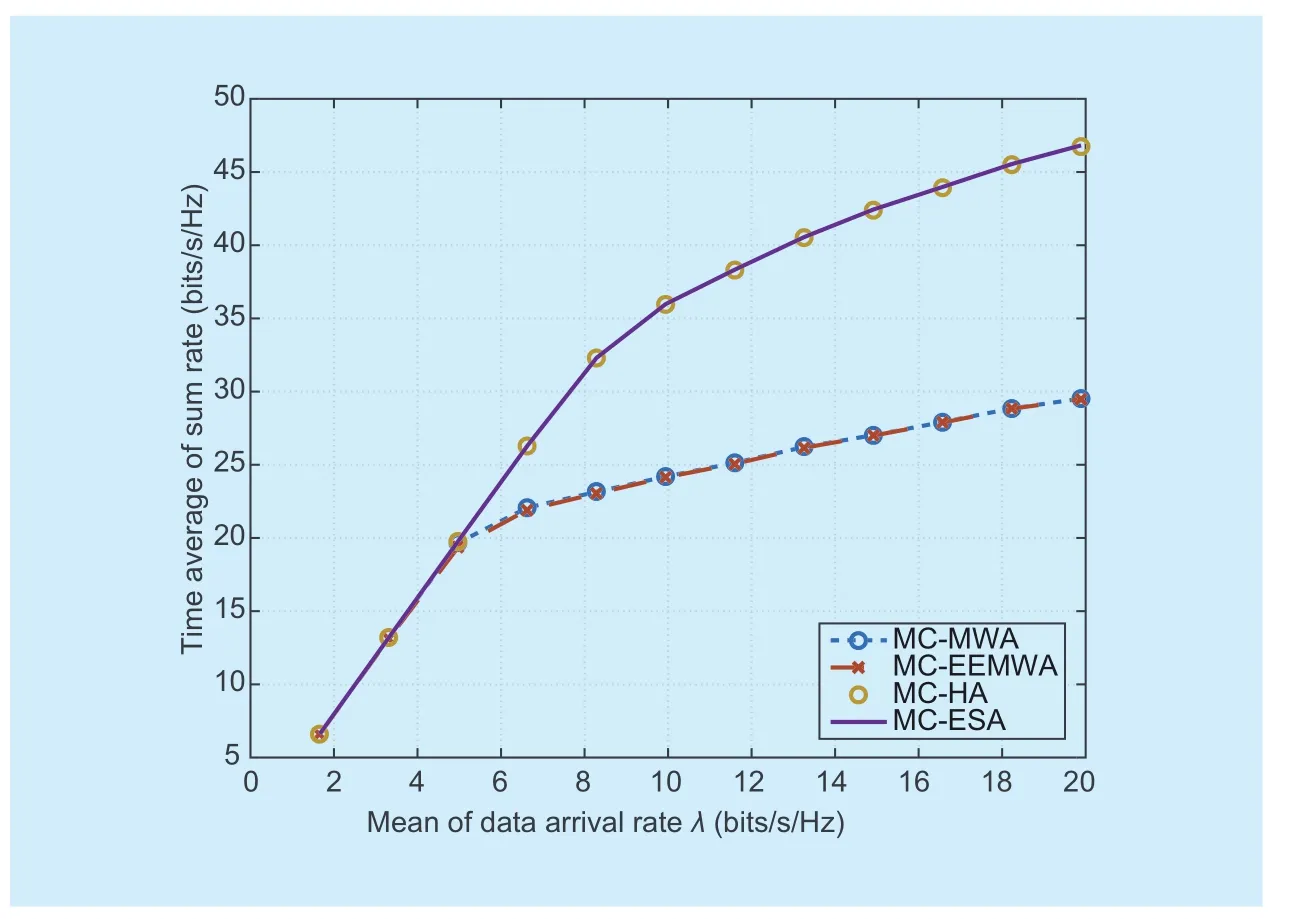
Fig. 3 Time average of sum rate for different λ
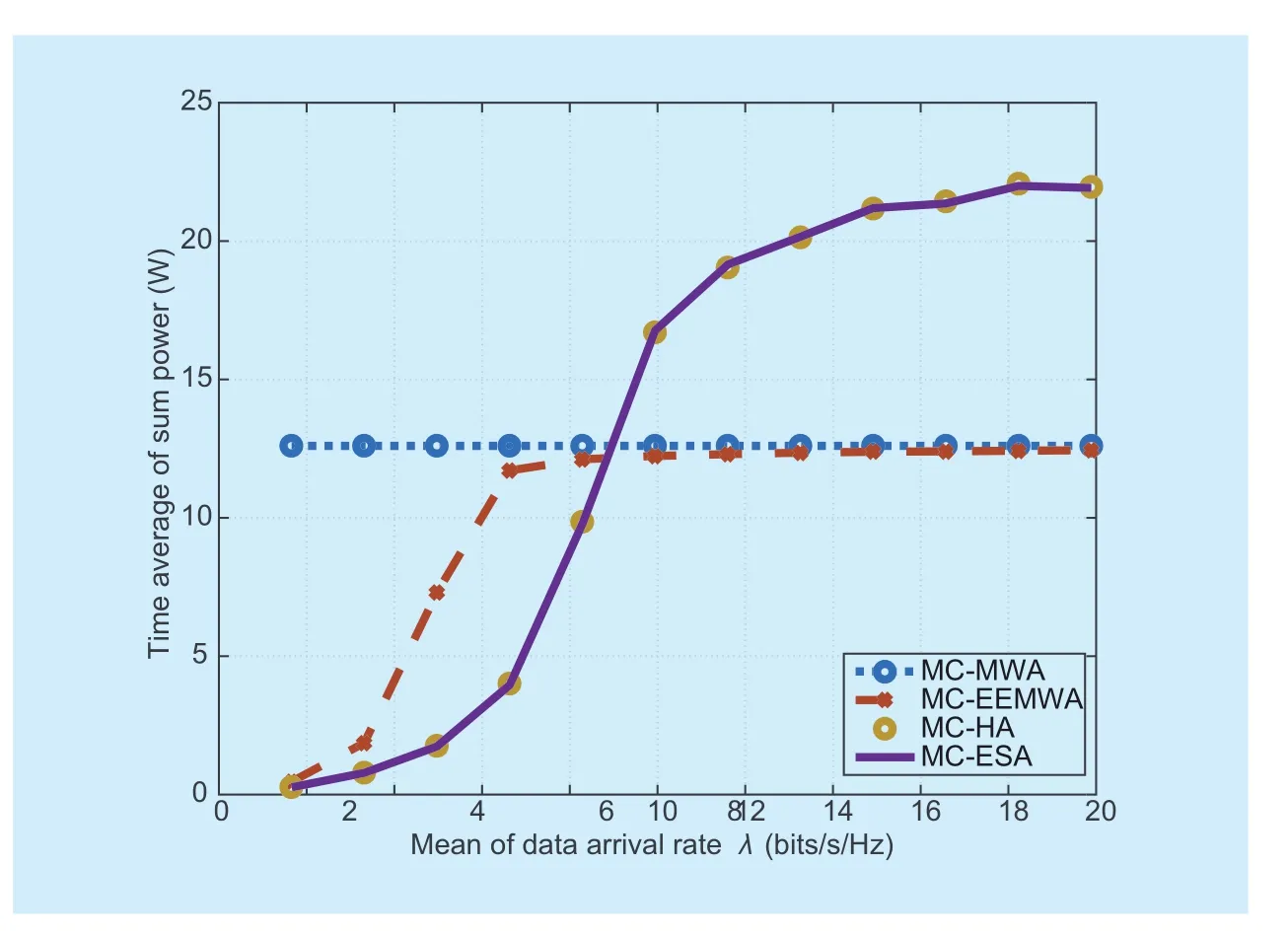
Fig. 4 Total power expenditure for different λ
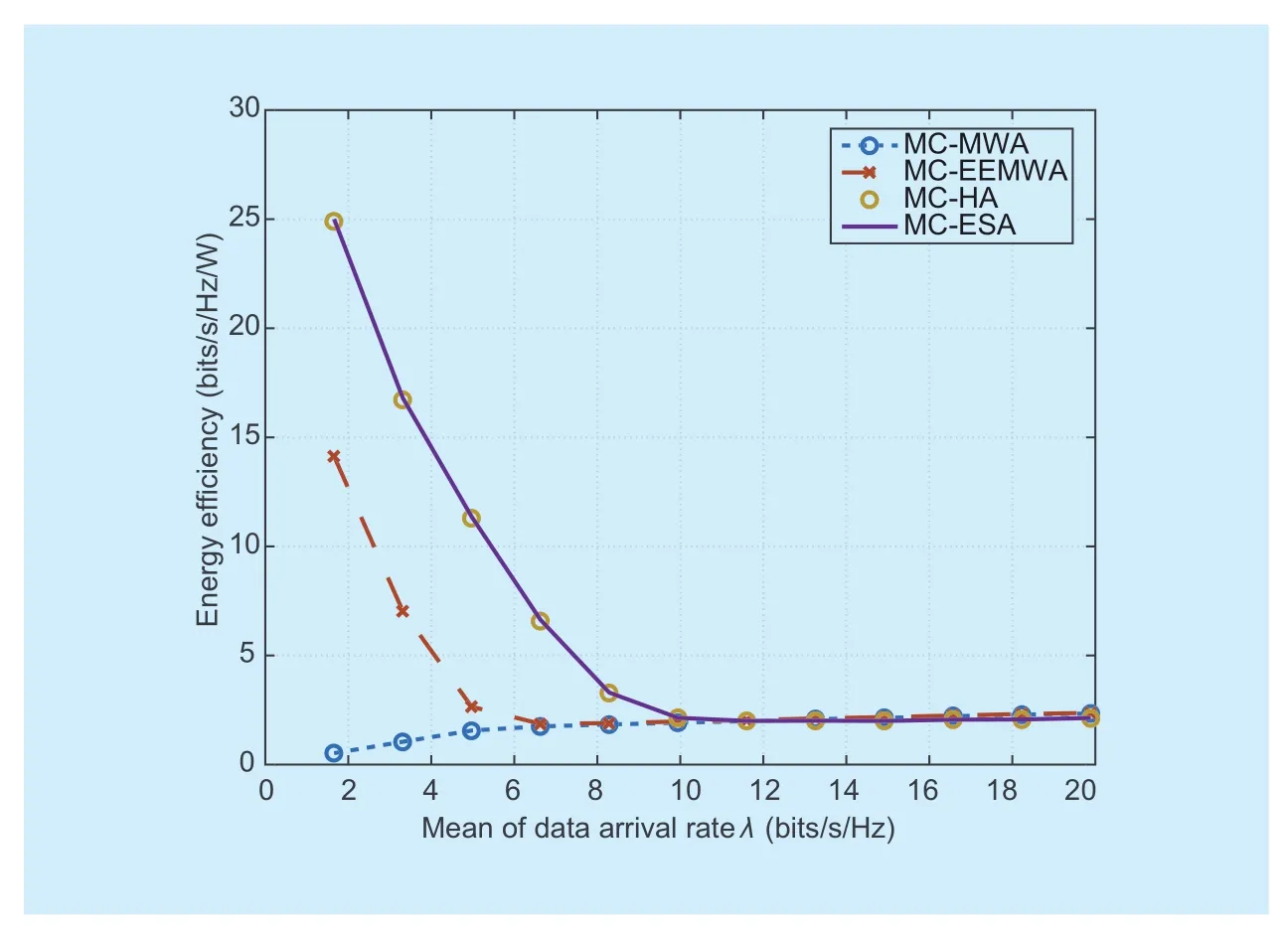
Fig. 5 Energy efficiency for different λ
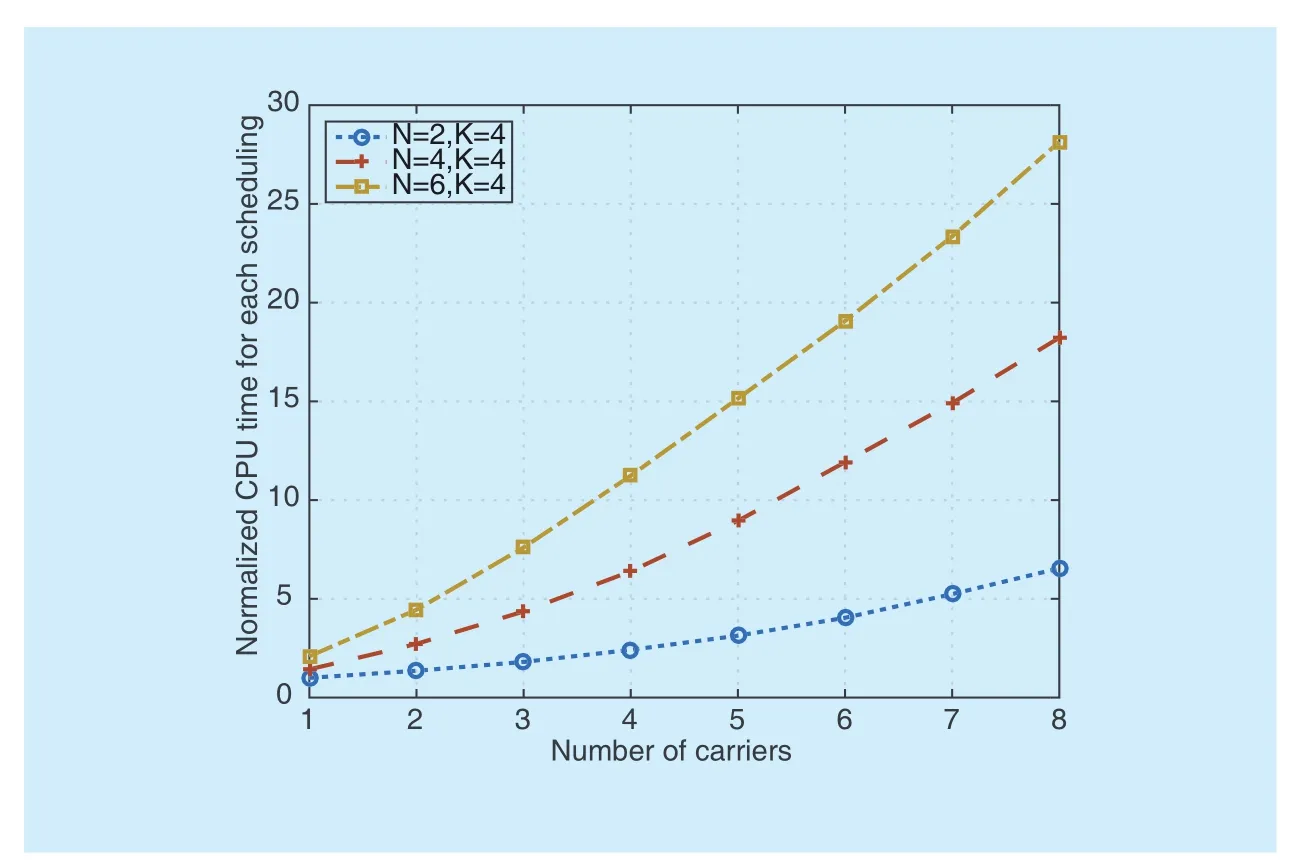
Fig. 6 Calculating time needed for different carrier number
This work has been partially supported by National Basic Research Program of China(2013CB329002), National Natural Science Foundation of China (61631013), The National High Technology Research and Development Program of China(2014AA01A703),Science Fund for Creative Research Groups of NSFC (61321061), National Major Project (2017ZX03001011), International Science and Technology Cooperation Program(2014DFT10320), National Science Foundation of China (61701457 & 61771286),Tsinghua-Qualcomm Joint Research Program,Huawei Innovation Research Program.
[1] C. V. N. Index, “Global mobile data traffic forecast update 2015–2020 white paper, feb 2016,”2016.
[2] S. Buzzi, I. Chih-Lin, T. E. Klein, H. V. Poor, C.Yang, and A. Zappone, “A survey of energy-efficient techniques for 5G networks and challenges ahead,” IEEE Journal on Selected Areas in Communications, vol. 34, no. 4, pp. 697–709,2016.
[3] H. Wei, Y. Li, L. Xiao, and S. Zhou, “Queue-aware energy-efficient scheduling and power allocation with feedback reduction in small-cell networks,” SCIENCE CHINA Information Sciences,vol. 61, no. 4, pp. 1–3, 2018.
[4] H. Halabian, I. Lambadaris, and C.-H. Lung, “Optimal server assignment in multi-server parallel queueing sys- tems with random connectivities and random service failures,” in Communications (ICC), 2012 IEEE Inter- national Conference on. IEEE, 2012, pp. 1219–1224.
[5] B. Sadiq, S. J. Baek, and G. De Veciana, “Delay-optimal opportunistic scheduling and approximations: The log rule,” IEEE/ACM Trans.Netw., vol. 19, no. 2, pp. 405– 418, 2011.
[6] M. Neely, “Energy optimal control for time-varying wire- less networks,” IEEE Transaction on Information Theory, vol. 52, no. 7, p. 29152934,2006.
[7] W. Feng, Y. Wang, N. Ge, J. Lu, and J. Zhang,“Virtual mimo in multi-cell distributed antenna systems: Coordi- nated transmissions with large-scale csit,” IEEE Journal on Selected Areas in Communications, vol. 31, no. 10, pp. 2067–2081, 2013.
[8] D. Wu, L. Zhou, and Y. Cai, “Social-aware rate based content sharing mode selection for d2d content sharing scenarios,” IEEE Transactions on Multimedia, vol. PP, no. 99, 2017.
[9] W. Feng, Y. Chen, R. Shi, N. Ge, and J. Lu, “Exploiting macrodiversity in massively distributed antenna systems: A controllable coordination perspective,” IEEE Transac- tions on Vehicular Technology, vol. 65, no. 10, pp. 8720– 8724,2016.
[10] L. Zhou, “Mobile device-to-device video distribution: Theory and application,” ACM Transactions on Multi- media Computing, Communications, and Applications, vol. 12, no. 3, pp.1253–1271, 2015.
[11] W. Feng, Y. Wang, D. Lin, N. Ge, J. Lu, and S. Li,“When mmwave communications meet network densifi cation: A scalable interference coordination perspective,” IEEE Journal on Selected Areas in Communications, vol. 35, no. 7, 2017.
[12] M. Feng, S. Mao, and T. Jiang, “BOOST: Base station on- off switching strategy for energy efficient massive mimo hetnets,” in Proc. IEEE INFOCOM 2016, 2016, pp. 1–9.
[13] Y. Li, M. Sheng, C. W. Tan, Y. Zhang, Y. Sun, X.Wang, Y. Shi, and J. Li, “Energy-efficient subcarrier assignment and power allocation in ofdma systems with max-min fairness guarantees,”IEEE Transactions on Communica- tions, vol. 63,no. 9, pp. 3183–3195, 2015.
[14] W. Feng, Y. Chen, N. Ge, and J. Lu, “Optimal energy- efficient power allocation for distributed antenna systems with imperfect CSI,” IEEE Transactions on Vehicular Technology, vol. 65,no. 9, pp. 7759–7763, 2016.
[15] F. Zheng, W. Li, L. Meng, P. Yu, and L. Peng, “Distributed energy saving mechanism based on comp in lte- a system,” China Communications,vol. 13, no. 7, pp. 39–47, July 2016.
[16] S. Zhang, N. Zhang, S. Zhou, J. Gong, Z. Niu,and X. Shen, “Energy-aware traffic offloading for green het- erogeneous networks,” IEEE Journal on Selected Areas in Communications, vol.34, no. 5, pp. 1116–1129, 2016.
[17] S. Samarakoon, M. Bennis, W. Saad, and M.Debbah, “Ultra dense small cell networks: Turning density into energy efficiency,” IEEE Journal on Selected Areas in Communications, vol. 34,no. 5, pp. 1267–1280, 2016.
[18] H. Zhang and S. Rangarajan, “Joint load balancing, scheduling, and interference mitigation in multi-cell and multi-carrier wireless data systems,” in Proc. IEEE WiOPT, 2009, pp. 1–10.
[19] F. Ahmed, A. A. Dowhuszko, and O. Tirkkonen,“Dis- tributed algorithm for downlink resource allocation in multicarrier small cell networks,” in IEEE International Conference on Communications, 2012, pp. 6802–6808.
[20] J. Li, J. Wu, M. Peng, and P. Zhang, “Queueaware energy-efficient joint remote radio head activation and beamforming in cloud radio access networks,” IEEE Transactions on Wireless Communications, vol. 15, no. 6, pp. 3880–3894,2016.
[21] J. Wu, Z. Zhang, Y. Hong, and Y. Wen, “Cloud radio access network (C-RAN): a primer,” IEEE Network, vol. 29, no. 1, pp. 35–41, 2015.
[22] M. J. Neely, “Stochastic network optimization with appli- cation to communication and queueing systems,” Synthe- sis Lectures on Communication Networks, vol. 3, no. 1, pp. 1–211,2010.
[23] L. Venturino, A. Zappone, C. Risi, and S. Buzzi,“Energy- efficient scheduling and power allocation in downlink ofdma networks with base station coordination,” IEEE Trans. Wireless Commun., vol. 14, no. 1, pp. 1–14, 2015.
[24] H. Wei, Y. Yan, L. Xiao, and S. Zhou, “Queueaware energy-efficient scheduling in small-cell networks,” in Proc. IEEE ICC’14 WS, 2014.
[25] J. E. Falk and R. M. Soland, “An algorithm for sepa- rable nonconvex programming problems,” Management Science, vol. 15, no. 9, pp.550–569, 1969.
[26] R. E. Moore, “Interval analysis,” Prentice-Hall,Inc., Englewood Cliあs, N.J., 1966.
[27] S. Wang, A. Zhou, C. Hsu, X. Xiao, and F. Yang,“Provision of data-intensive services through energy- and qos-aware virtual machine placement in national cloud data centers,” IEEE Transactions on Emerging Topics in Computing,vol. 4, no. 2, pp. 290–300, 2016.
[28] M. Andrews, K. Kumaran, K. Ramanan, A. Stolyar,R. Vijayakumar, and P. Whiting, “Scheduling in a queu- ing system with asynchronously varying service rates,” Probability in the Engineering and Informational Sci- ences, vol. 18, no. 2, pp.191–217, 2004.
[29] Z. Lei and C. Rose, “Probability criterion based location tracking approach for mobility management of personal communications systems,”in Proc. IEEE GLOBECOM, 1997, pp. 977–981.
[30] J. Zhao, W. Feng, M. Zhao, and J. Wang, “Coordinated multi-user spectrum sharing in distributed antenna-based cognitive radio systems,”China Communications, vol. 13, no. 1, pp.57-67, Jan. 2016.
[31] H. Mao, W. Feng, and N. Ge, “Social-aware cooperation among mobile terminals for wireless downlink transmission,” China Communications,vol. 12, no. 9, pp. 1-10, Sep. 2015.
杂志排行
China Communications的其它文章
- Migration to Software-Defined Networks: the Customers’ View
- Software Defined Traffic Engineering for Improving Quality of Service
- Towards a Dynamic Controller Scheduling-Timing Problem in Software-Defined Networking
- Efficient Virtual Network Embedding Algorithm Based on Restrictive Selection and Optimization Theory Approach
- A Fast and Memory-Efficient Approach to NDN Name Lookup
- Energy-Efficient Joint Content Caching and Small Base Station Activation Mechanism Design in Heterogeneous Cellular Networks
